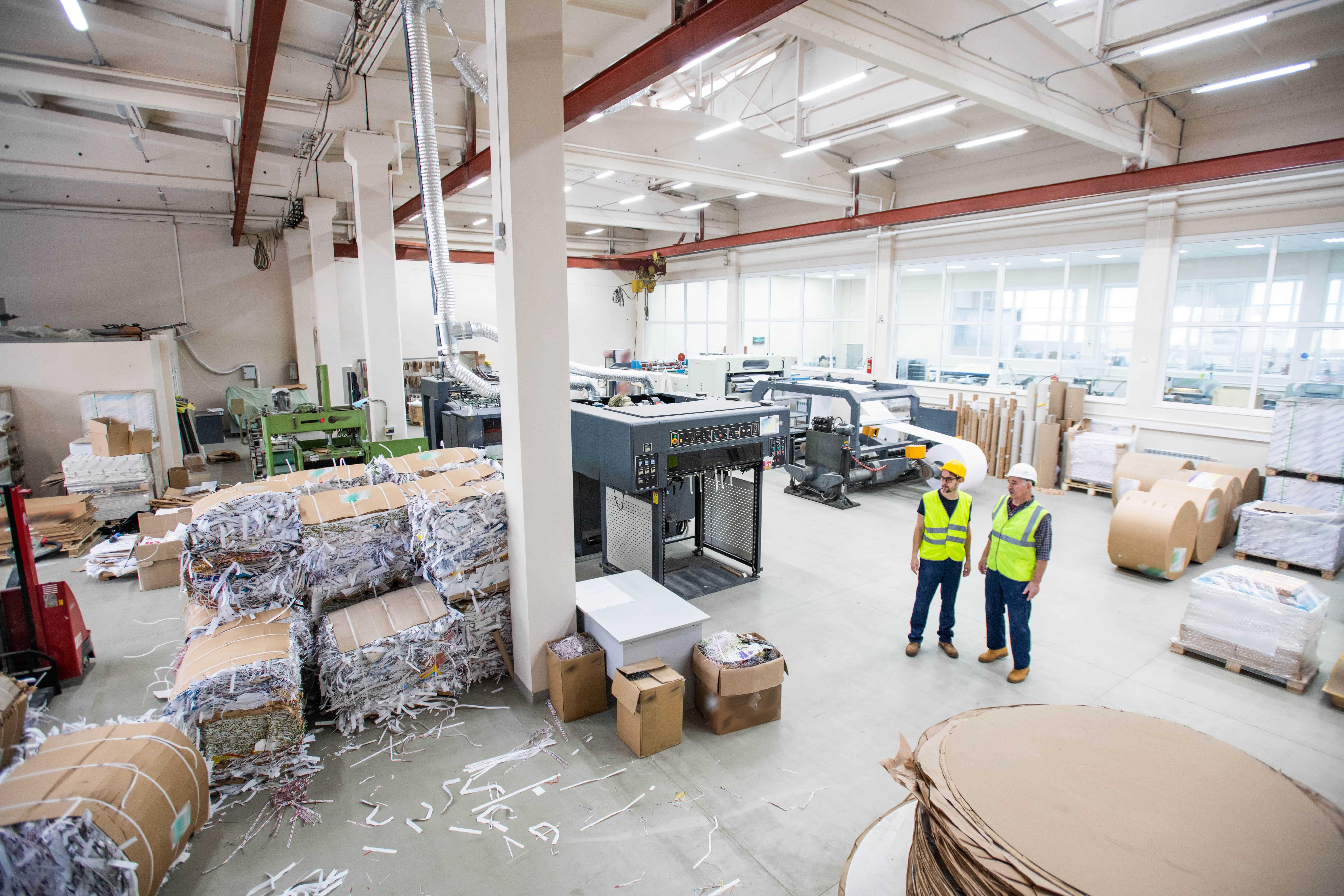Waste & material traceability solution for sustainable facilities

The ecological and economic problems are growing like an avalanche, and one of these crises is the global garbage problem due to frenzy consumption but fewer recycling rates. We are trying to find a solution with the high-tech products and a different perspective based on the circular thought in the production models. Therefore, the global garbage crisis has the potential to forming new resources. So it also means resource management! From this point of view, what we need to do is:
If we want to find practical solutions for garbage disposal problems and create waste free cities, we need a holistic perspective. While there are different sources of waste, there is one prior thing we need to reduce its use from individuals to companies to bureaucracy, paper! If we cannot prevent it, paper recycling will come to the rescue. Hence, we will achieve substantial results from protecting natural resources to saving energy. How can we accomplish this?
Paper use has an essential place in our lives as one of the vital points of communication and production. With the transition to the digital age, its use has decreased. Also, the target for zero waste movement, which aims to minimize individual waste production based on a minimal lifestyle, mainly was scrap paper. But paperlessness and reuse of scrap paper also worked to some extent. What was required for the need for effective waste management was paper recycling. Therefore, paper recycling companies began to constitute a large part of the recycling industry, especially in the US. Thus, while the paper recycling business develops rapidly, trees, natural habitats, and energy are preserved to a large extent.
People still have questions about the paper recycling business and methods despite the paper recycling industry. The following questions need to be answered to discover how to get people to recycle more: Which paper is recyclable and which is not, where is the scrap paper delivered? Don’t worry. Everything you need to know about paper recycling is here!

Paper recycling is simply processing activities for reusing scrap paper. Although the paperlessness and zero waste movement reduce paper use, the paper continues to find a place in all areas of our lives, from packaging to communication. Even though office papers, cardboards, newsprints and booklets are among the most recycled, almost all papers are recyclable, except for these:
The most critical point for paper recycling process is that the recycled paper must not contain even a tiny amount of contamination. According to recycled paper market trends, we see that contamination is unacceptable. For example, China, the largest customer of recycled paper sales, has not accepted any paper bale with a contamination rate of 1% or more since 2018.
So, although paper recycling seems simpler than other materials, recycling contamination rate is more important. Extreme care must be taken to ensure no mixtures in recycling bins with other materials. You don’t want scrap papers ruined by the spills! Let’s explore how is paper recycled and reused.

Here is a guide for you to learn how paper gets recycled. We will first examine the initial stages that apply to every waste process.
Now we can move on to the paper recycling specifics.
Paper recycling enables you to make more efficient productions with cost and energy savings. In addition to its economic advantage and promoting a circular economy, it has invaluable environmental benefits, such as:
Better still, with Evreka, a company that aims to make the world a better place and plans even the most minor details for you by understanding the importance of recycling! With its digital and end-to-end solutions, Evreka will both eliminate your paper usage and create a seamless process flow by finely planning your recycling activities that have problems due to disparate systems.

MRF Management, the most striking solution of Evreka’s product range, will facilitate the complex sorting and control processes of paper recycling for you. Now,
In recycling centers, on the other hand, thanks to optimized operations, you will have no problems with billing activities or trackability, and you can maximize your profits. More importantly, you do your best for more equitable and sustainable growth as your business grows!
Request a demo today for meeting the sustainable waste management world of Evreka.